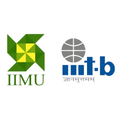For businesses to fully utilize their data, it must be free from errors, duplications, inconsistencies, and incorrect values. This clean data quality serves as the foundation for decision-making, strategy creation, and a better understanding of customer behavior, making it a vital component of any business.
This process of cleaning up data is known as ‘data cleaning’ or ‘data wrangling’ — a task that can take hours or even days for an analyst to do manually. Fortunately, there are some ways to streamline the data-cleaning process & get reliable insights much faster than ever before.
In the section below, we’ll discuss how businesses can benefit from streamlining their data cleaning processes.
Understanding data quality
Data is the lifeblood of any organization. It’s used to make decisions, measure performance, and inform strategic initiatives. But data needs to be accurate and reliable in order for it to be useful. This means that organizations need to clean their data regularly. Organizations often face challenges when cleaning huge data sets with multiple sources.
Such datasets can contain duplicate information, outdated records, missing values and even incorrect entries due to user errors or system glitches. Without a proper cleaning process, these flaws can remain undetected, leading to poor decision-making based on inaccurate insights from the data set.
Actionable Insights: Value of data quality
Actionable insights result from a rigorous data analysis process that transforms raw data into meaningful information. These insights give organizations specific recommendations and actions to drive strategic decision-making, operational efficiency, and improved performance.
However, the accuracy and reliability of these insights heavily rely on the quality of the underlying data.
Importance of actionable business insights
Actionable business insights hold significant value for organizations across various industries. These insights allow businesses to identify trends, uncover hidden patterns, understand customer behavior, optimize processes, and seize emerging opportunities.
By leveraging actionable insights, organizations can make data-driven decisions that lead to increased revenue, cost savings, enhanced customer experiences, and competitive advantages.

Streamlining data cleaning processes
To ensure reliable insights, organizations must establish streamlined data cleaning processes. Here are some key steps to consider:
- Data profiling and assessment: Conduct a thorough examination of the data to identify potential issues. This includes evaluating data accuracy, completeness, consistency, and integrity. Organizations can prioritize cleaning efforts and allocate appropriate resources by understanding the data landscape.
- Standardization and cleansing: Implement data standardization techniques to ensure consistency across different data sources. This involves removing duplicate entries, correcting errors, validating data formats, and applying necessary transformations. Data cleansing techniques can help enhance data accuracy and reliability.
- Data integration and validation: Integrate data from multiple sources and validate its accuracy and consistency. This process involves matching and merging datasets, resolving conflicts, and cross-validating data to ensure coherence and eliminate discrepancies.
- Data quality monitoring: Establish robust data quality monitoring mechanisms to assess the quality of incoming data continuously. Implement automated checks, alerts, and notifications to identify anomalies, data drifts, or inconsistencies in real-time. Regular data quality audits help maintain high standards and detect issues before they impact business decisions.
- Data governance and documentation: Develop a data governance framework that defines roles, responsibilities, and processes for data management. Maintain comprehensive documentation of data sources, cleaning procedures, and quality metrics. This ensures transparency, accountability, and facilitates future data analysis.
Benefits of streamlining data cleaning processes
By streamlining data cleaning processes, organizations can reap several benefits:
- Enhanced Data Accuracy: Efficient data cleaning processes minimize errors, inconsistencies, and duplications, improving data accuracy and reliability. This, in turn, ensures the accuracy of the resulting insights and the decisions based on them.
- Time and Cost Savings: Streamlining data cleaning processes reduces manual effort, automates repetitive tasks, and optimizes resource allocation. This saves time and reduces costs associated with inefficient data management practices.
- Improved Decision-Making: Reliable and accurate insights enable organizations to make data-driven decisions confidently. By clearly understanding the data quality and cleaning processes, decision-makers can have more trust in the insights generated and take appropriate actions accordingly.
- Increased Operational Efficiency: Clean and consistent data improves operational efficiency by enabling organizations to identify and resolve issues promptly. Streamlined data cleaning processes ensure that data is readily available, accessible, and usable, enabling teams to derive insights and take swift action.
Conclusion
In the era of big data, organizations must prioritize data quality and streamline data cleaning processes to obtain reliable and actionable business insights. By investing in data quality monitoring, organizations can maintain high standards, identify data issues proactively, and unlock the true potential of their data assets.
Through streamlined data cleaning processes, organizations can pave the way for accurate, consistent, and meaningful insights that drive strategic decision-making, operational efficiency, and business success.












.png)







